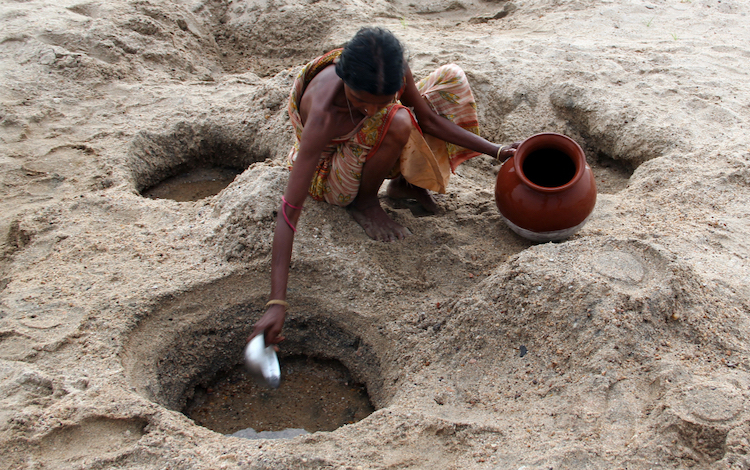By Rita Joshi
BONN | SHARM EL-SHEIKH (IDN) — Leaders from over 25 countries and 20 organizations have launched the International Drought Resilience Alliance to accelerate action and help countries to be better prepared for future droughts.
Drought represents the most serious hazard to livestock and crops in nearly every part of the world, and ranks among the greatest threats to sustainable development, especially in developing countries, but increasingly so in developed nations too.
In the declaration made in the margins of UN Climate Change Conference, leaders from all sectors pledged on November 7 to drive change in how the world tackles the growing drought risks: moving from emergency response to building long-term resilience.
Presidents Pedro Sánchez Pérez-Castejón of Spain and Macky Sall of Senegal rallied world leaders to create the Alliance as “a specific solution for the United Nations” to the impacts of climate change.
In a joint communication, Presidents Sánchez and Sall declared: “We are only as resilient to climate change as our land is. Building resilience to drought disasters is the way to secure the gains we make on each sustainable development goal, particularly for the most vulnerable people. The mission of the alliance is to give political impetus to make the land’s resilience to drought and climate change a reality by 2030.”
Ibrahim Thiaw, Executive Secretary, United Nations Convention to Combat Desertification (UNCCD), said: “We are in a race for drought resilience —and it’s a race we can win. Drought is a natural hazard but does not have to lead to human disaster. The solutions are available, and we can create a drought resilient world by increasing our ambition, harnessing the political will, and joining forces to act together.”
The Alliance will be bolstered by new political commitments, including a Euro 5 million seed fund announced by Spain, co-convener of the event with Senegal, to support the work of the Alliance and catalyze a process to mobilize more resources for this agenda, and a commitment made by the President of Kenya, William Ruto, to plant 5 billion trees in the next 5 years, and 10 billion trees in 10 years.
The Alliance calls on leaders to make drought resilience a priority in national development and cooperation, including deepening the engagement of stakeholders, such as the private sector, in work on drought resilience.
Among the key objectives of the Alliance is promoting the consolidation of regional initiatives to fast-track sharing of innovation, technology transfer and mobilization of resources.
The Alliance will also collaborate with other platforms, including the initiative launched by the United Nations Secretary-General and the World Meteorological Organization (WMO) to achieve universal coverage of early warning systems and regional initiatives to reap the maximum benefits of working together on drought resilience.
Building drought resilience presents an opportunity to significantly reduce the high human, social and economic costs of drought. These range from the loss of life, livelihoods and biodiversity, to water and food insecurity, to disruption in the energy, transportation and tourism sectors, as well as forced migration, displacement, and conflicts over scarce resources.
Drought in numbers
According to the latest Drought in Numbers report compiled by UNCCD, droughts have increased in frequency by 29 per cent since 2000, with some 55 million people affected every year.
The Intergovernmental Panel on Climate Change (IPCC) projects that droughts will be more frequent, severe and last longer. Climate change bears much of the responsibility, but so does how we manage our land and water resources.
The IPCC estimates that three out of every four people in the world will be living in drier, water-scare conditions by 2050.
Between 1900 and 2019, droughts impacted 2.7 billion people worldwide and caused 11.7 million deaths.
From 1998 to 2017, drought generated economic losses of about US$124 billion across the world, not to mention the cost in human suffering and lives.
Drought is a driver of migration: water deficits explain 10% of the rise in total migration.
The latest IPCC report projects that by 2030, drought will displace 700 million people in Africa alone.
By 2040, an estimated one in four children will live in areas with extreme water shortages.
Up to 216 million people could be forced to migrate by 2050, largely due to drought in combination with other factors including water scarcity, declining crop productivity, sea-level rise, and overpopulation. [IDN-InDepthNews — 08 November 2022]
Photo: Unprecedented droughts have far-reaching impacts on agriculture, energy, transportation, tourism, and human health. Source: International Drought Resilience Alliance


